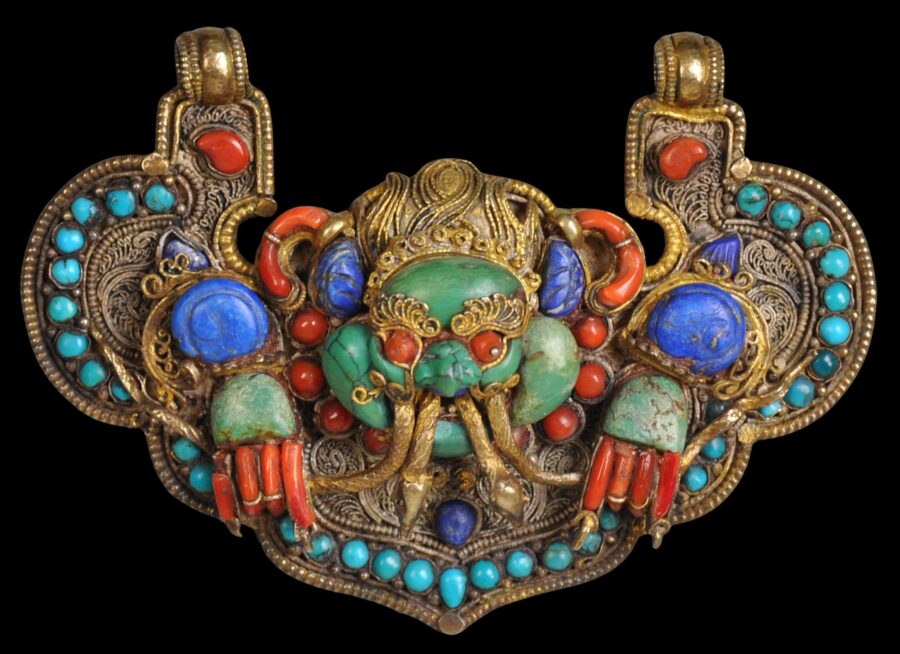This splendid pendant of gilded silver is set with a large central turquoise, plus smaller turquoise cabochons, coral and lapis lazuli. The central figure is the Nepalese version of the Tibetan monster mask chepu.
The rendering of the chepu is very much in high relief and three dimensional. The face and hands rear off the surface of the plaque conveying much movement and dynamism. The chepu’s face is well decorated with fine gilded filigree eyebrows and whiskers. Coral cabochons secured with gilded pins serve as eyes and a pair of snakes and ribbons spew from the creature’s mouth.
The form of the pendant is a Chinese-inspired ruyi or stylised cloud. There are two loops at the top to allow suspension. The edge of the pendant is bordered with gilded, ‘pearled’ silver wire.
The arrangement and setting of the stones is typically Newari and is called jarao or jadoba work. It was most fashionable in the 18th and 19th centuries and involves using a network of cloissons and box settings to hold the stones in place along with gilded silver spiral filigree elements.
The reverse is decorated with applied gilded silver wire a central version of the Kalachakra, the interlocking ten syllables written in Lantsa script of the Kalachakra mantra (Om Ham Ksha Ma La Va Ra Sva Ha) plus a column of Ume script on either side.
This is a very fine example of 18th century Newar jewellery from the Kathmandu Valley. The piece is in fine condition. There are no apparent losses.
References
Casey Singer, J., Gold Jewelry from Tibet and Nepal, Thames & Hudson, 1996.
Clarke, J., Jewellery of Tibet and the Himalayas, V&A Publications, 2004.
Ghose, M. (ed.), Vanishing Beauty: Asian Jewelry and Ritual Objects from the Barbara and David Kipper Collection, Art Institute of Chicago, 2016.







